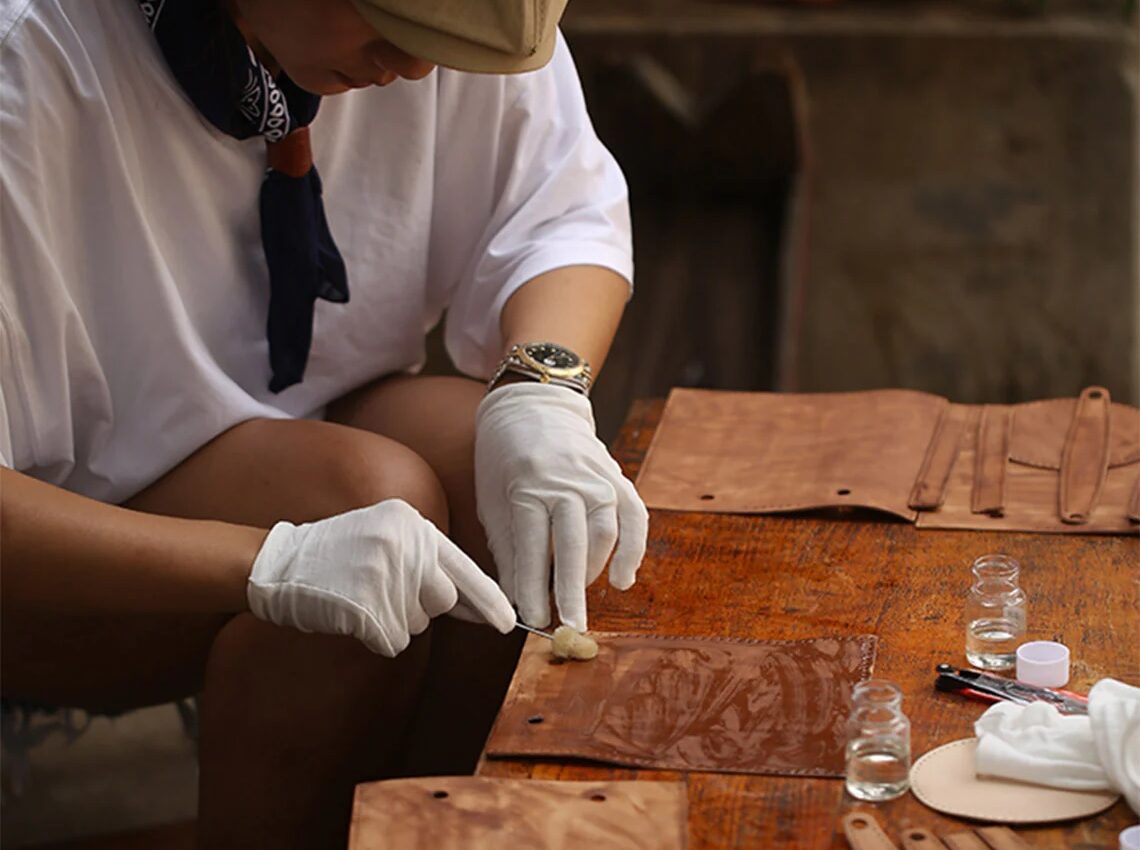Introduction:
Leather dyeing is a craft that has been practiced for centuries, transforming raw hides into beautiful and vibrant materials used in various industries, from fashion to automotive. However, amidst the artistry lies potential hazards that demand careful attention. Safety should always be paramount in any dyeing process to protect both the artisans and the environment. In this blog, we’ll delve into crucial safety measures essential for a hazard-free leather dyeing process.
Understanding the Risks:
Before diving into safety measures, it’s vital to grasp the potential risks associated with leather dyeing. Many dyes and chemicals used in the process can be hazardous if mishandled. These hazards include skin and eye irritation, respiratory issues from inhaling fumes, and environmental pollution if chemicals are not properly disposed of. Moreover, some dyes contain carcinogenic compounds, emphasizing the need for stringent safety protocols.
Essential Safety Measures:
- Personal Protective Equipment (PPE):
The first line of defense against chemical exposure is proper PPE. Workers involved in the leather dyeing process must wear protective gear such as gloves, goggles, aprons, and respirators. Gloves should be chemical-resistant to prevent skin contact with dyes and other harmful substances. Goggles protect the eyes from splashes or fumes, while respirators ensure safe breathing by filtering out airborne particles and chemical vapors.
- Ventilation:
Adequate ventilation is crucial to mitigate exposure to potentially harmful fumes. Leather dyeing facilities should be well-ventilated, either naturally through windows and doors or mechanically with exhaust systems. Ventilation systems help disperse chemical vapors and maintain air quality within safe limits, reducing the risk of respiratory issues among workers.
- Chemical Handling and Storage:
Proper handling and storage of chemicals are imperative to prevent accidents and contamination. All chemicals should be clearly labeled, stored in designated areas away from heat sources, and secured to prevent spills or leaks. Workers should be trained in safe chemical handling procedures, including how to dilute dyes and handle spills effectively. Additionally, incompatible chemicals should never be stored together to avoid hazardous reactions.
- Emergency Preparedness:
Despite precautions, emergencies can still occur. Hence, every leather dyeing facility must have a comprehensive emergency response plan in place. This plan should outline procedures for spills, fires, and medical emergencies. All employees should be trained in emergency protocols and know the location of safety equipment such as fire extinguishers, first aid kits, and emergency showers/eyewash stations.
- Environmental Considerations:
Leather dyeing can have a significant environmental impact if not managed responsibly. To minimize pollution, dyeing facilities should implement wastewater treatment systems to neutralize or remove harmful chemicals before discharge. Additionally, efforts should be made to reduce water usage and recycle process water wherever possible. Proper disposal of chemical waste according to regulatory guidelines is essential to prevent contamination of soil and water sources.
Conclusion:
Safety is paramount in the leather dyeing process to protect the well-being of workers and the environment. By implementing rigorous safety measures such as wearing proper PPE, ensuring adequate ventilation, practicing safe chemical handling, preparing for emergencies, and addressing environmental concerns, leather dyeing facilities can minimize risks and create a safer working environment for all involved. As artisans continue to produce exquisite leather goods, let’s ensure that safety remains a top priority every step of the way.







